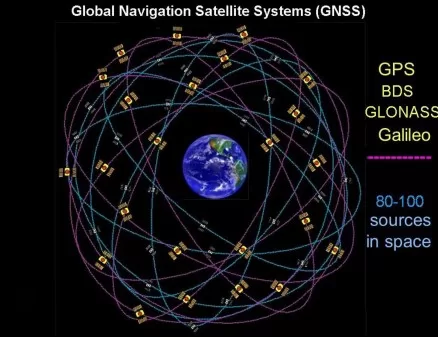Introduction
The electromagnetic (EM) spectrum is an invisible yet indispensable domain that underpins the modern world’s infrastructure, including communication, navigation, defense, energy, and healthcare systems. As technology advances, the role of the EM spectrum in national security and societal well-being becomes increasingly significant.
From military operations to emergency response, and from economic activity to civilian life, the control and management of the EM spectrum is now recognized as a critical element of national power.
This chapter explores the strategic importance of the EM spectrum, the challenges in managing it, and guidelines for ensuring dominance in this critical domain. It argues that effective governance of the EM spectrum is not merely a technical issue but a strategic imperative that intersects with geopolitics, innovation, and national resilience
Importance Of The Electromagnetic Spectrum
The EM spectrum encompasses all frequencies of electromagnetic radiation, from extremely low frequencies used in submarine communication to the extremely high frequencies utilized in satellite links and directed energy weapons. It is broadly divided into radio waves, microwaves, infrared, visible light, ultraviolet, X-rays, and gamma rays, though the most strategic relevance lies in the radio and microwave domains
In the context of national security, the EM spectrum is important as it is utilized in a wide range of domains:
• Defense and Military Operations
Modern warfare relies heavily on the spectrum for command and control, intelligence, surveillance, reconnaissance (ISR), electronic warfare (EW), and precision-guided munitions. Denial or degradation of spectrum access can render sophisticated military assets ineffective.
• Cybersecurity and Intelligence Gathering
Secure communication links, radar surveillance, and signal intelligence (SIGINT) are spectrum-dependent. The ability to intercept, jam, or manipulate enemy signals provides a critical edge.
• Space and Satellite Systems
Satellite-based systems for communication, navigation (e.g., GPS, GLONASS, Galileo, Beiduo), weather monitoring, and surveillance (mapping, thermal imaging, missile launch detection, etc.) require unhindered access to specific frequencies. Disruption or denial can have cascading effects across both military and civilian sectors.
• Telecommunications & Broadcasting
The telecommunications infrastructure that supports the Internet, mobile networks, and broadcasting forms the backbone of the modern economy. Any adverse effect on it can have long-term consequences.
• Critical Services
Civil aviation, maritime operations, power grids, healthcare (e.g., MRI, remote diagnostics), transportation, emergency services, and even banking rely on uninterrupted spectrum-enabled systems. Ensuring resilient and secure EM spectrum usage is vital for national stability.
• Disaster Response and Public Safety Communications
During natural disasters and emergencies, spectrumenabled communication is essential for coordination and timely response. Spectrum scarcity or interference in such times can lead to devastating consequences.
National Security and the Spectrum Ecosystem
Modern warfare and national defense strategies increasingly depend on spectrum-based capabilities. The digital battlefield now includes cyber and space domains, which rely heavily on spectrum availability and superiority. Spectrum access can determine the success of operations and the survivability of military assets.
Countries with the capability to control, deny, or exploit the EM spectrum possess a significant strategic advantage. Conversely, nations that lack spectrum awareness and control mechanisms remain vulnerable to both external aggression and internal disruptions.
Challenges In Spectrum Management and Security
While the EM spectrum offers immense strategic potential, it is finite and contested. Several challenges hinder effective dominance and governance:
1. Congestion and Scarcity
With the exponential growth of wireless communication technologies, the spectrum is increasingly congested. Competing needs from defense, commercial, and civilian sectors make allocation and deconfliction complex. As more devices and services compete for spectrum access, especially in urban areas, congestion becomes a critical issue. The proliferation of 5G, IoT, and satellite-based services is exacerbating the problem.
2. Cyber-EM Convergence
• The blurring lines between cyber and EM domains pose new challenges. For instance, spectrum-based attacks can be used to deliver malware (e.g., via insecure IoT devices), while cyber operations can compromise spectrum management systems. This convergence of cyber and EM threats necessitates integrated defense mechanisms.
3. Technological Sophistication of Adversaries
• Peer adversary is investing in sophisticated EW capabilities, anti-satellite (ASAT) weapons, and cyber-EM convergence technologies. This increases the vulnerability of national systems to jamming, spoofing, or electromagnetic pulse (EMP) attacks.
4. Lack of Regulatory Harmonization
• International coordination through bodies like the International Telecommunication Union (ITU) is often slow or politically constrained. Disparate national policies on spectrum usage lead to interference, inefficiencies, and disputes.
5. Limited Situational Awareness
• Comprehensive real-time monitoring of the EM spectrum is difficult. Without robust sensing and analytics, blind spots in EM activity can be exploited by adversaries.
6. Technological Complexity and Dual-use Nature
• Many spectrum-based technologies are dual-use, serving both civilian and military purposes. This complicates governance, especially in times of conflict or heightened tension. Additionally, rapid innovation outpaces policy and regulatory frameworks, leaving gaps that adversaries can exploit.
7. Cybersecurity and EW Threats:
• Hostile actors can use electronic and cyber means to jam, spoof, or intercept spectrum-based communications.
8. Geopolitical Competition
• Global powers are aggressively pursuing spectrum dominance, including the militarization of outer space and deployment of low Earth orbit (LEO) satellite constellations. These moves raise the stakes for nations to develop competitive spectrum strategies.
Guidelines For Spectrum Dominance and Resilience
To ensure national security and societal well-being in a complex environment, nations must adopt a comprehensive multi-pronged approach to spectrum management, involving technology, policy, and international cooperation. The following guidelines provide a roadmap:
1. Develop a National Spectrum Strategy:
• Formulate a comprehensive policy that aligns defense, commercial, and civilian requirements.
• Establish a centralized authority for integrated spectrum planning and conflict resolution.
• Prioritize spectrum as a critical national asset, akin to land, sea, air, and cyber domains.
• Build in process for adapting to technological change.
• Include provisions for crisis response and recovery.
2. Invest in Advanced EW Capabilities
• Enhance both offensive and defensive EW systems, including jammers, decoys, and EMP protection to counter enemy comms, nav systems, radars, swarm UAVs, missiles, aircraft, etc.
• Focus on cognitive electronic warfare—systems that can autonomously adapt to changing EM environments.
• Train and equip dedicated EW units within the armed forces.
3. Invest in Indigenous R&D and Innovation:
• Fund indigenous R&D in all related fields to ensure technological independence for EM spectrum dominance.
• Focus on both hardware and software technologies, including LASERS and EO/IR
• Encourage public-private partnerships to accelerate innovation.
4. Enhance Spectrum Sharing and Reuse
• Promote dynamic spectrum access technologies that allow flexible and efficient utilization.
• Develop software-defined radios (SDRs) capable of operating across multiple bands.
• Implement secure communication protocols.
5. Deploy AI and Big Data for Spectrum Analytics
• Use machine learning algorithms for real-time spectrum monitoring, interference detection, and threat prediction.
• Integrate data from multiple sensors (ground, air, space) for situational awareness.
• Develop digital twins of the EM environment for testing and simulation.
6. Secure EM Infrastructure
• Harden critical systems against EMP, jamming, and spoofing threats.
• Conduct regular red-teaming exercises to identify vulnerabilities in spectrum-reliant systems.
• Mandate spectrum security audits for telecom, defense, and transportation sectors.
7. Strengthen Regulatory Frameworks
• Implement agile, transparent, and forward-looking regulatory mechanisms
Efficiently manage spectrum allocation, licensing, and monitoring.
• Equip regulatory authorities with enforcement capabilities against illegal spectrum use.
8. Strengthen International Collaboration
• Actively participate in ITU and regional forums to shape global norms and standards.
• Pursue bilateral and multilateral agreements for spectrum coordination, especially in border areas.
• Share intelligence and threat data with allies to build collective spectrum defense.
• Conduct joint exercises to sharpen skills and processes for joint responses.
9. Develop Spectrum Aware ness and Monitoring Capabilities
• Prioritize real-time situational awareness across the spectrum domain. Establish operational superiority through national investments in spectrum sensing, AI-driven monitoring, and electromagnetic battle management systems.
10. Train and Retain Skilled Workforce
• Establish centers of excellence for EM spectrum research and training.
• Incentivize academic-industry collaboration on next-generation spectrum technologies, including EW, Cyber, AI, quantum computing etc.
• Include EM spectrum technology and strategy in military and civil service education curricula.
• Ensure long-term capacity through continuous education and retention strategies.
Conclusion
The electromagnetic spectrum is no longer just a technical or regulatory matter—it is a strategic domain that underwrites national security, economic growth, and societal function.
As the world moves deeper into the era of information warfare, space exploration, and smart infrastructure, control over the EM spectrum will determine strategic advantage.
Nations that fail to treat spectrum dominance as a core component of their national strategy risk falling behind in both peace and war. Conversely, those that integrate spectrum considerations into defense planning, technology development, and diplomatic engagement will be better positioned to protect their interests and sovereignty.
Ensuring spectrum superiority requires not just technological investment but a holistic strategy encompassing policy, capacity-building, and international collaboration.
By recognizing the EM spectrum as a domain of power akin to land, sea, air, and space, nations can prepare for a future where security and societal well-being increasingly depend on the invisible yet vital waves that connect, protect, and power the modern world.




